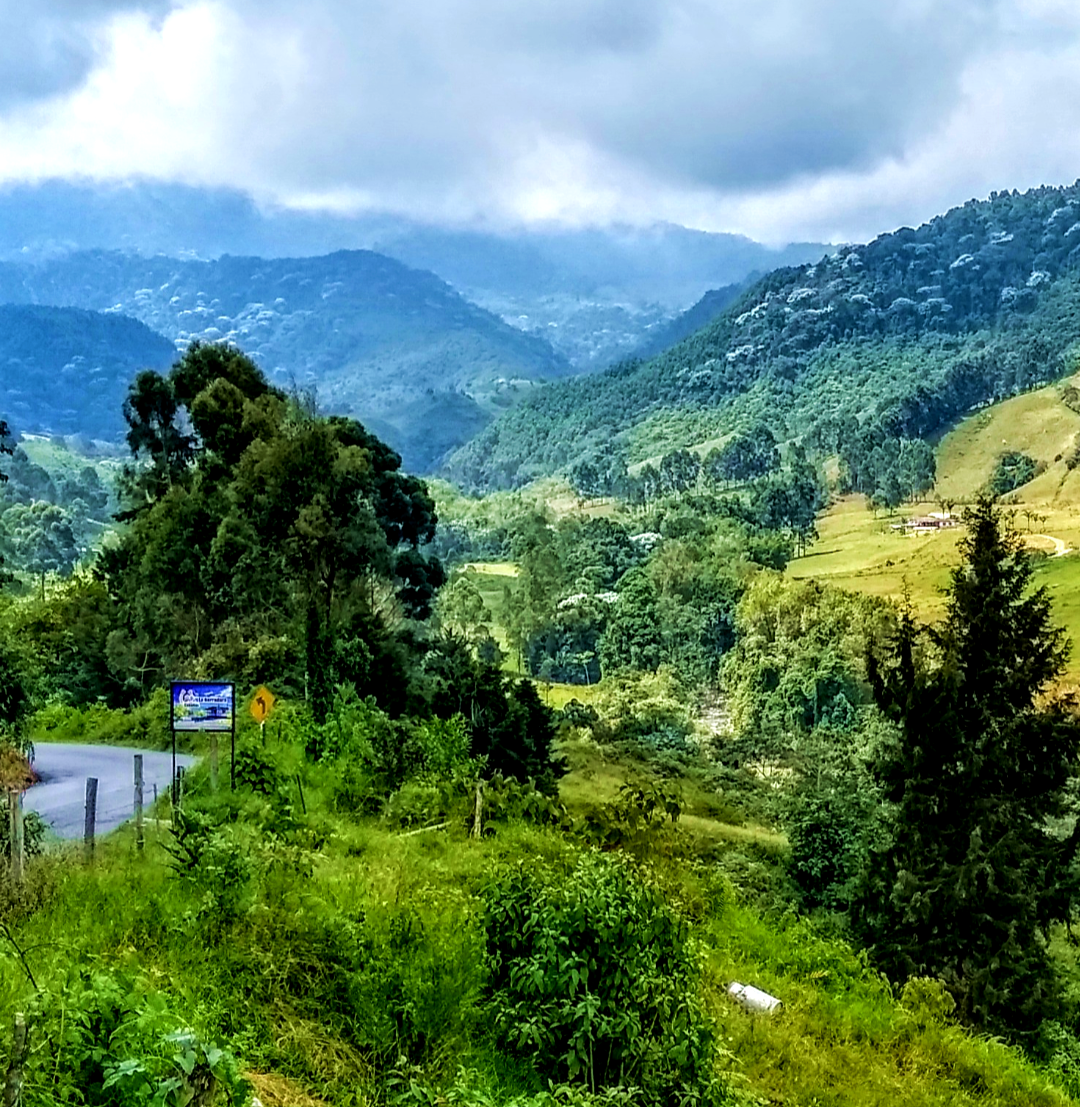August 2019
 I can’t say the time passed quickly during my two months in Colombia — not because it dragged along like it had gone limp in one foot, quite the contrary. It’s because there was so much experience and awareness packed into the time that it seemed much longer. That’s a good thing when you’re my age — every extension of the chronological path into the future helps. 🙂
I can’t say the time passed quickly during my two months in Colombia — not because it dragged along like it had gone limp in one foot, quite the contrary. It’s because there was so much experience and awareness packed into the time that it seemed much longer. That’s a good thing when you’re my age — every extension of the chronological path into the future helps. 🙂
My purpose in this post is to discuss the generalities rather than the specifics of my experience. I want to touch on things like economics, social structure, poverty and the like that don’t figure in a travelogue. Not to worry, I’ll include pics so you don’t get bored to death. We aim to please.
Probably the best approach is to break things down into discrete categories so you can jump among them according to your taste. I’ll start with the daily life stuff and then get into the social and economic elements, which prove a bit thornier than bopping around looking at nice things. I’m sure that doesn’t surprise you. Given the ways of the world it’s inevitable. So here we go …
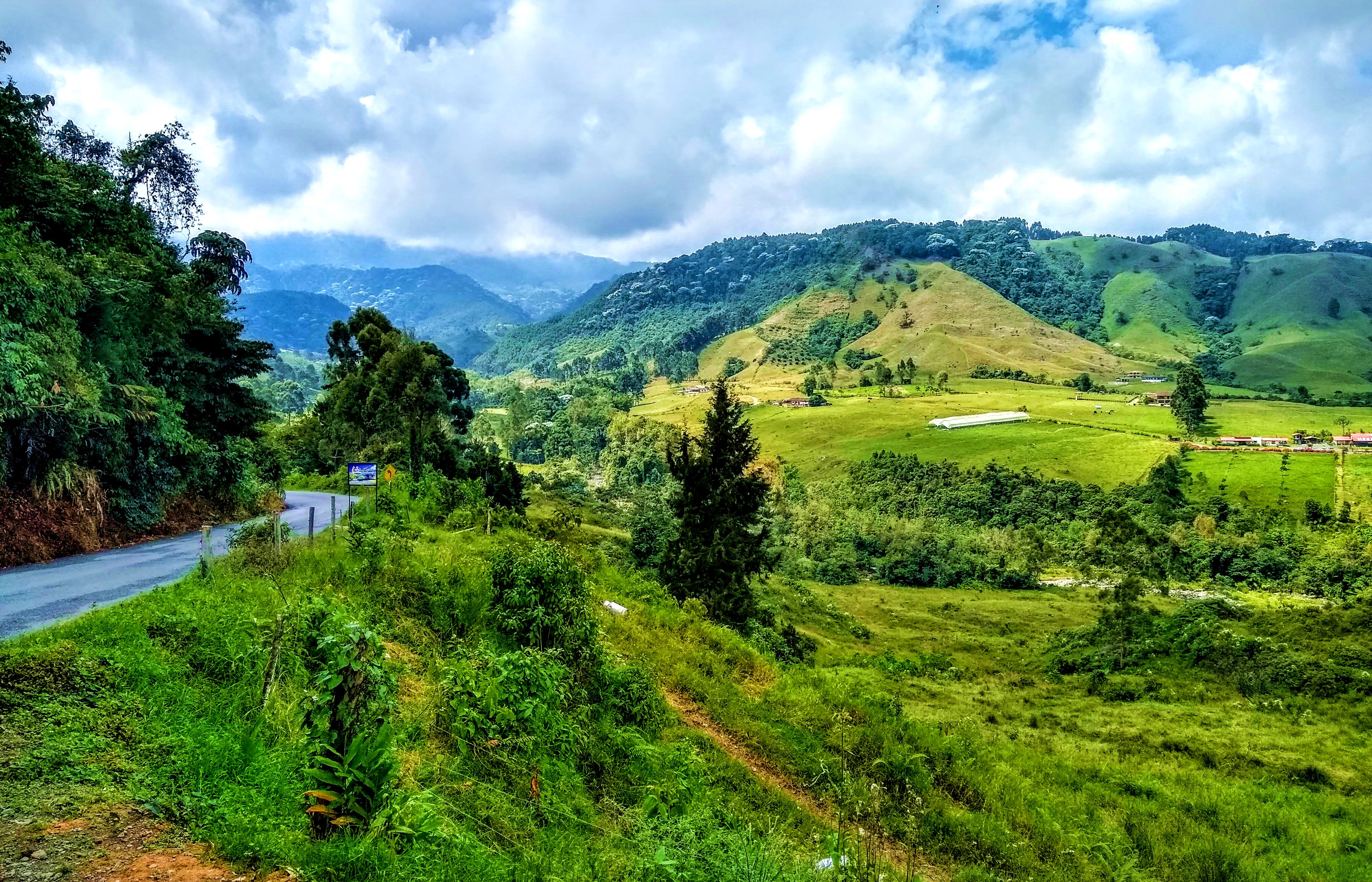
![]()
The Texture of Daily Life
Traffic. Colombian drivers are lunatics, especially young bucks on motorcycles who do things on city streets Evil Knievel would find right up his alley. One night shortly before I left I saw a group of twenty-somethings going down the major thoroughfare in front of my apartment with their bikes up on the back wheel at a speed I’d probably not reach on a highway. The caption for that pic reads: “WAY More Testosterone Than Brains.” Traffic is disfiguring enough to life in the city that I’m planning to look elsewhere for an abode for the next visit. Enough deafening traffic noise 24/7, enough road madness before my very eyes. In the first month of my stay a local friend sent me a picture of an accident he saw on the way home from work one afternoon. A woman on a motorcycle hit or was hit by a truck and her body was severed at the waist. All the things formerly tidily inside her lay splattered on the road in every direction. It offered a sobering reminder of the risks that Colombian traffic poses. In my two-month stay I witnessed evidence or heard report of seven fatal accidents in Pereira and I’m sure there were more than that number. Such a statistic in a city of 500,000 in the States would provoke a governmental investigation to stop the carnage.
My modus operandi: use whatever mojo you can to keep luck on your side. The smaller towns are better because the traffic density is lower. The madness is the same but it’s lower on the statistical register so you’re less likely to become a statistic yourself. Staying out of city traffic as much as possible is high on my list of mojo enhancers.
Most cities of any size have a system known as “pico y placa” which prohibits cars into the central area by day of the week based on the last digit of the license plate number. There are no exceptions, so if you get caught you’ll get fined. It’s one more reason to head to a smaller town, since “pico y placa” only applies to cities big enough to have traffic congestion problems. In the smaller towns it doesn’t apply.
Navigation is also the stuff of nightmares. A highway will dump you into a city and leave you to figure out how to find your way through it. You’ll end up winding your way through a maze of one-way streets hoping to come across a sign that mentions your destination, but signs are few and far between. Google Maps will help some but don’t count on it being up-to-date with current road conditions. The system we have in the States of freeways with bypasses and beltways doesn’t exist. The main road between Pereira and Medellin, for example, is a two-lane affair with intersections going off it all the time. So stock up on Patience Pills and do your Zen breathing before you set out. You’ll be pushed to whatever your limit is, that’s as sure a bet as putting money down on odds the Pope is Catholic.
Parking. It’s as though Colombia developed before the age of the automobile and then jumped on the car bandwagon with both feet but without giving the matter any forethought. Parking in cities is a nightmare of the first order. Parking in towns is little better, just a bit less desperate. Expect to search way beyond due diligence for the privilege of parking. And may the Force be with you because trust me, Bridget, you’re gonna need it.
Shopping. Supermarkets are very similar to American standard issue and I found it easy to keep my cupboards and the fridge full of good stuff. Prices are much lower than in the States, especially for produce, which is gorgeous on top of being cheap and cheerful. Finding out where things of the non-grocery variety are sold is just part of the gig — it doesn’t work like in the States where one-stop shopping is the goal. There are few stores like a Super WalMart. Walking around and getting to know the neighborhood is the best way to discover what’s available where. Eventually contacts with people will bring you additional information you need to find what you want. It’s been a fairly easy go of it for me in that regard. If you don’t speak Spanish, however, that circumstance won’t obtain. The number of people who speak good English in a city like Pereira, Manizales or Armenia is probably countable on just the fingers, no need to get the toes involved in the math.
Walking. In the city — particularly the city center — walking is an extreme sport, not a pleasant recreation. The sidewalks aren’t wide enough to accommodate two ample human bodies and there are many, many more than two on the ground, some of them more than ample. Sidewalks are also not the sacrosanct domain of pedestrians they are in the States. If you have an auto repair shop and you need a bit more space, whadda ya do? Spread out on the sidewalk, of course! Brilliant! Likewise, if you’re in a pinch to pick up something in a nearby shop and you can’t find a parking garage handy, whadda ya do? Park on the sidewalk! Fantastic! The surface levels of sidewalks also change haphazardly and continually so if you’re strolling along looking at your cell phone don’t be surprised to step into a 12 inch drop and end up on your face. Most intersections don’t have a walk indicator and many don’t even have a way to tell if the light for oncoming traffic is green or red. Looking twice before crossing any street is a must-do given the kamikaze tendencies of Colombian motorists and motorcyclists. This chaos makes going to the city center a thing I’ve come to avoid unless I have a specific purpose. Then my m.o. is: in and out, nobody gets hurt — fingers crossed.
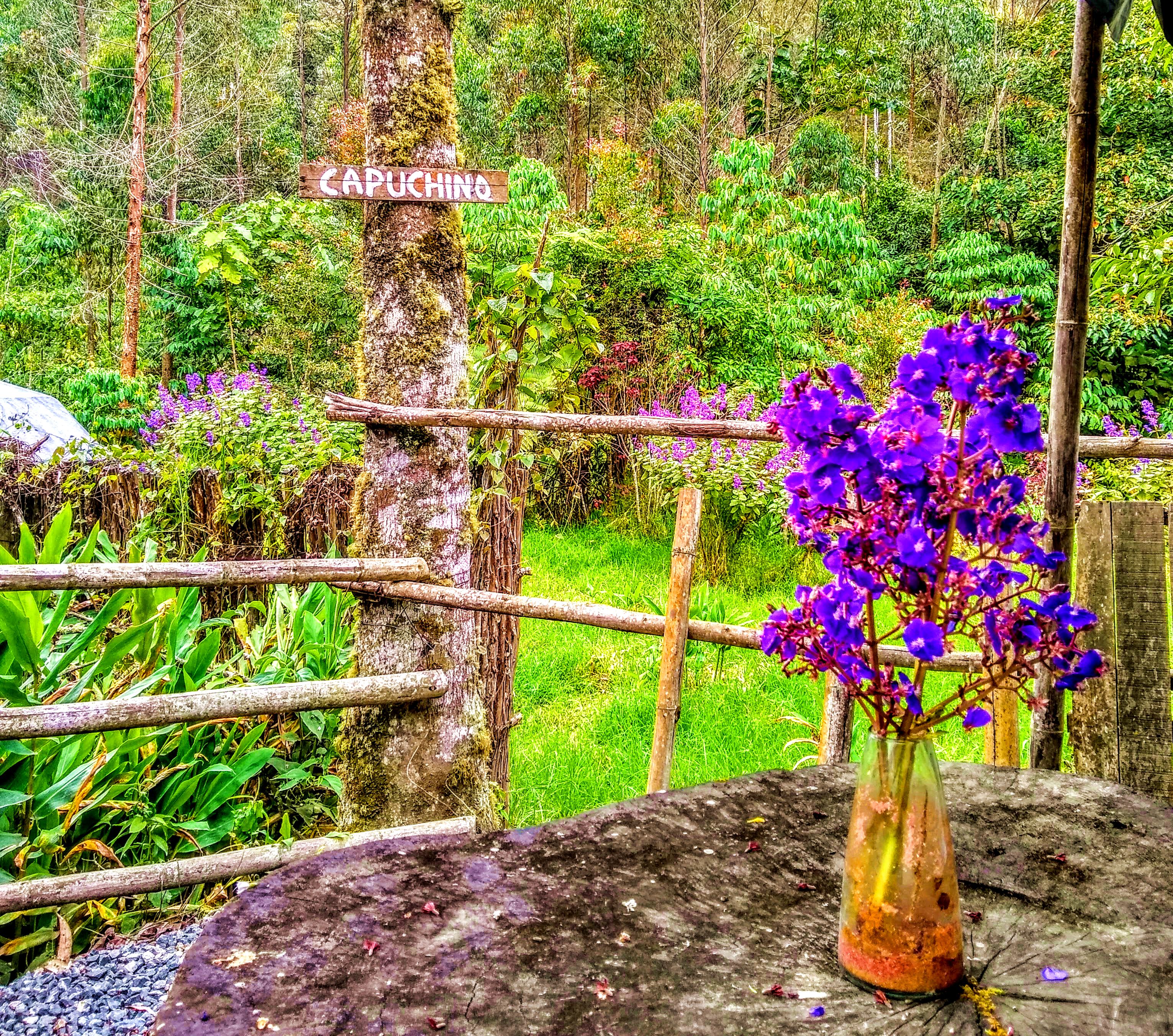
Public Space. When you’re out and about in the city you can expect to be panhandled. It’s just gonna happen, especially if you sit down in a public plaza to have a pause that refreshes. The people who panhandle you will be of the homeless/down-and-out variety and look the part, usually. I thought I’d found the perfect strategy to avoid such things by choosing a toney cafe to do my pauses that refresh but I was wrong. Oh sooo wrong. There I was one day after stomping all the way across town and climbing the hill that takes you up to the fancy part of town (La Circunvalar) where I plopped myself down in the terrace seating at a Juan Valdez cafe, the Colombian equivalent of Starbucks. All chi-chi, just like the American incarnation of the beast, with trendy twenty-somethings sitting about nursing a macchiato and bashing away on their laptops. And what happens? Fifty-something Carlos Whooziwhatsit comes up, lays a brochure about something or other on my table and launches into a spiel about having cancer and needing a contribution to his healthcare costs, which of course are crippling. I gave him COP5000 (ca. USD $1.50) just to get rid of him. My attitude toward public space soured to the point that I only took a pause that refreshes INSIDE a business because the establishments don’t let the dodgy bits in to panhandle. As the Colombians say, “Qué pereza!” It means “what a bummer” or “what a pain.” But there it is, you gotta deal with it.
Noise. I thought the Philippines was noisy but it doesn’t hold a candle to Colombia. As I mentioned above, the traffic noise in the city is constant and often deafening. People play music everywhere, all the time, at a decibel level that would find public complaints filed in the States. You walk past some shops only to find a large loudspeaker positioned at the door blasting music at you. Everybody here does the same thing in their cars and homes. In homes the TV will be on ALL THE TIME. When I have visitors I never announce beforehand that there’s a no TV rule in my place and most Colombians when they first come will immediately grab the remote and turn on the tube. It was the same in the Philippines. Why people are so addicted to having TV going every waking hour I have no idea. I don’t have that circuit activated. I also never play music in the car because the classical music I listen to is too hard to hear over the road noise. Colombians will crank up the Greatest Salsa Hits and have it on every minute they’re on the road. In other words, there’s only one volume setting in Colombia: LOUD.
I didn’t realize how wearing the sonic assault was until I took stock about six weeks after arrival and realized I was being worn down to a stump by the continual beating my nervous system sustained. One pulls oneself up by one’s bootstraps, of course, but the effect is continual like draining a battery. The battery is your ability to deflect the aural barrage that everyday life throws your way. By the end of my two months’ stay my battery was near zero. I just wanted AWAY from it all and to hear nothing, nothing at all. I was surprised to find myself so affected by the ambient decibel level but I don’t give myself a hard time about it. I live in a rural area in the States where it’s so quiet you can hear a pin drop. No wonder the decibel blast of city life in Colombia wore me down. Had I known the noise level would be so high I’d have sought out other accommodation. I’m telling you about it so you can avoid it if you’re fond of peace and quiet. It’s the only hope I have of redeeming my suffering into something useful. 🙂
Restaurants. There are two major categories available: “comida tipica” and those that aspire to some sort of ethnic or international flava. In the comida tipica type it’s quite easy to get a set-menu lunch for a song — $3-4 is common — that includes some kind of meat of your choice, salad, rice, soup and a fresh fruit drink. Cheap, cheerful and available on nearly every block, it seems. Ethnic and international restaurants are a crashing disappointment. The fare is inevitably bland, adjusted to the bland taste of the local population and not worth the money IMHO. I’d stick with the typical restaurants and find things you like — both your palate and your wallet will end up far happier.
It’s a supreme irony to me that Colombia can grow nearly every fruit or vegetable known to man yet the ingredient repertoire of Colombian food is that of a peasant eeking out subsistence. Colombian cuisine could be among the most diverse, surprising and exciting on the Planet if the cultural substrate were different. It is what it is, however, there’s no way around that. If you limit your expectations to American farm home cooking (including the inward parts like tripe) you’ll probably adapt fairly quickly. If you’re a hard-core internationalist and love your Thai papaya salad, your Indian kormas and a proper French bouillabaisse then you’re in for a period of gastronomic austerity. I stopped eating out very soon into my stay unless a social occasion made it inevitable. I bought great stuff at the supermarket and ate very well, very healthily and very flavorfully for next to nothing compared to what I would have paid for the same groceries in the States. If you’re doing self-catering accommodation then you’re golden, you can do whatever you want foodwise. If you’re in a hotel and stuck eating what’s available in restaurants, just think of Great Aunt Emma’s stew with her biscuits that everybody eats a bite of and then claims to be too full finish. That’s how I react to arepas, the corn cakes that form a staple of the diet here. Tasteless blobs of starch IMHO — something you’d only choose to eat if you don’t have any other options. Life’s too short to be bored to death by what’s on your plate. That’s my main complaint about Colombian food — boring with a capital B. It’ll keep you from starving, yes, but you might end up wondering if survival is all it’s cracked up to be.
There are plenty of American-style fast food restaurants available like Frisby (the Colombian answer to KFC) and burger places that do quite a tolerable job. If you’re into that sort of thing it’s easy to provision yourself at prices much lower than those in the States. Somehow paying $3 for a double burger makes the cholesterol content seem less problematic than if it costs $8 like in the States. I don’t think my arteries would agree, but hey, I’m the one managing the budget so I win. 🙂

Public Transportation. Pereira qualifies as a small city, not a metropolis, but the buses I saw going by on the street in front of my apartment building were chock-a-block all day long. I’d rather walk, thanks very much. In most places there are several levels of public transport available for intracity getting about, some of them called chivas are reminiscent of a bus in, say, Hyderabad, India. I’m not well versed in their ins and outs so I’ll just mention their existence and leave it at that. Some backpacker blog will have far better info than I can provide.
Long-distance buses, on the other hand, are quite good. Going between cities is easy and cheap. I’ve been from Pereira to Manizales and Armenia by coach and it’s a perfectly fine way to get between urban centers. The process is also relatively easy: you go to the Terminal de Transportes, find a bus line going to your chosen destination, buy your ticket and away you go. You’ll end up at the Terminal de Transportes of the place to which you’re travelling. It’s a good option if you’re not going really long distances, in which case taking a cheap internal flight by VivaAir or EasyFly is a better option.
Taxis are a thing of ease. They run on meters as a matter of course so there’s no haggling about the cost of getting where you’re going. You just flag one down and off you go. The one caution I’ll mention is trying to get a taxi during rush hour. Not many people own cars so taxis are in big demand when rush hour is on. There’s a handy trick to use, however: go to the nearest mall. There will be a taxi stand there where you can get one without having to stand on the street for God knows how long trying to flag one down. If I’m out and about during rush hour that’s my first recourse. Outside of rush hour I never had any trouble flagging down a taxi in a few minutes. There are taxi apps available (Easy Tappsi and Taxis) but I haven’t used them. They function just like Uber or Grab so if you want that option it’s easy to download the app and fire it up.
Car Rental. There’s a great company for car rentals based in Bucaramanga: alkilautos.com. The online interface is available in English. They partner with local rental agencies like Localiza/Hertz in Pereira so you can do the booking online and pick the car up in whatever city you want. It doesn’t work if you’re out in the boondocks, obviously, you have be in a population center of some sort in order to get the vehicle from a local agency. The cost with added insurance (something I’d not forego here) is about the same as in the USA. It’s not particularly cheap, but it’s easy and the local rental agency I dealt with was fantastic. Just remember the “pico y placa” business. The rental agent will go over it with you but only in Spanish, of course, not in English. And remember as well that you’re taking your life in your hands driving in a Colombian city. To be forewarned is to be forearmed …
Colombian Time. Here’s an example. A friend and I agreed to meet one day at a certain time. He shows up an hour and a half late and starts texting wildly, “I’m here, where are you? What happened?” My jaundiced expat head just shook a bit from side to side as I thought, “Colombian time strikes again.” Not everybody is as hopelessly out of synch as my friend with the relationship of reality to the passage of chronological time, but being “on time” isn’t a big thing here. The usual standard we use in the States — 15 minutes past arranged time with no communication about being late counts as a no-show — would put EVERYBODY into that category in Colombia. One acquaintance told me Colombians are only on time for job interviews, period end of story. Everything else is a crap shoot. It’s not diffiult to deal with it if you take a proactive stance. I set meeting times with the friend mentioned above two hours in advance of the time I actually wanted to get together. Sometimes he was late even then, but I felt less annoyed because I’d forestalled at least half the day being wasted LOL. Oy gevalt.
As I move more and more into an independent lifetyle I care less and less about coordinating with my local contacts. Organizing my day is a way to get the most out of it, not a telltale sign of obsessive-compulsive disorder. The Colombian approach is massively wasteful of time and opportunity IMHO. Of course that waste shows at the collective level, too. Things don’t work very well, not nearly as well as we expect them to work as a matter of course in the USA or in Europe. If people don’t give a rip when something happens the reason for the difference is not far to seek. I’m at the point of leaving the locals in the dust, to be honest. If they’re not ready to roll when my train leaves the station they can find another train. Mine has places to go and things to see.
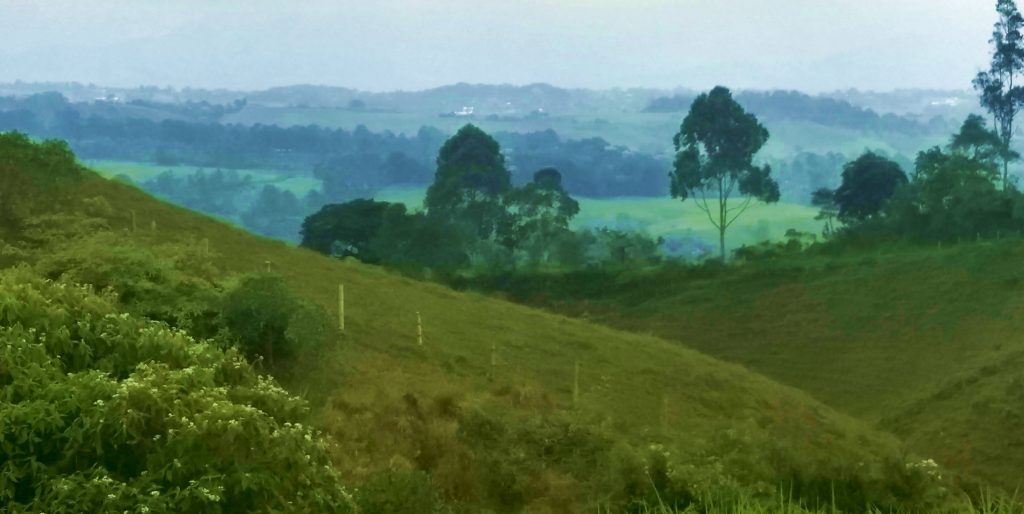
![]()
Safety and Security Issues
Columbia’s troubled past is no secret. The last thing Colombians want tourists to bring up is that troubled past, of course — that’s not surprising. As a foreigner in the country it behooves one to have a thought about security and safety, however. Here’s what I found in my own experience.
General Safety. Just going around the city brings no big problems if you mind your Ps and Qs. There are dodgy neighborhoods where a solo white expat would be ill-advised to go, of course, but the same is true of New York City. It’s all about knowing the lay of the land and choosing your location sensibly to avoid trouble. There are touts and beggars a-plenty but I never found them aggressive. You just keep moving and the waters smooth over fairly quickly. I only had one instance where a guy got ticked off because I wouldn’t give him anything, but I just started speaking to him forcefully in German and that shut him up. What a twat.
Theft. It’s common here so it’s important to be preventative. I carry my stuff around in a theft-proof shoulder bag with steel cable in the strap and in the bag itself. Nobody’s going to get the bag off me by slashing the strap, that’s for sure. Things have been known to disappear from hotel rooms but that trouble is easily avoided by using a portable safe for your cash and your passport. I bought one before I came here and it’s been great — light enough to fit into my briefcase, small enough to stash in some hidey hole and combination lockable. It provides an extra measure of security I find useful so I don’t have to worry about things.
Law Enforcement. I was surprised to discover that there are the same kind of police checkpoints here I came across in the Philippines. It’s not something we see in the USA. On the way back from Marsella my friend and I got stopped at a police checkpoint on the outskirts of Pereira. These are national police, the only kind here, and they look like military. They wanted to see our papers. I keep a copy of my passport in my shoulder bag while leaving the original in the portable safe in the apartment. The policeman who inspected my papers didn’t quite know what to make of a foreigner with a passport copy — the ultimate test of my authenticity was a question to my travel companion asking if I was a friend of his or what. A quick yes! removed any doubt that remained in the policeman’s mind. It just goes to show that you need to keep your documents with you, a copy if not the original. You never know when a checkpoint might come up, they’re completely unpredictable as the police intend them to be. No law enforcement officer in the city has ever looked twice in my direction so the caveat applies especially to travel outside urban areas.
When driving I never had any run-ins with the police. So it’s not like (northern) Mexico where you’re sometimes stopped for no reason and given a trumped-up fine that goes straight into the policeman’s pocket to pay for a few rounds of beer with the pals. Police are pretty thin on the ground here, in my observation.
Health Hazards. There are no major health hazards in the Eje Cafetero. The climate doesn’t foment fungi and insects that strike you with crippling diseases like in the hot tropics. If you go to the Amazonas region, however, make sure you’ve got your shots in order, because down in that steam bowl anything can happen. The tap water here in Pereira is ostensibly potable and I’ve used it without any problems. There was a scare about Hepatitis A being in the water supply in the second half of my stay but it turned out to be groundless. Thank goodness. Bottled water is available in all the stores so you can play it safe if you want and only drink the sterilized stuff.
Healthcare. Healthcare is good and for expats readily available through private clinics. Colombians will go into a catatonic state if you tell them what you pay for services in a private clinic, but to your estimation you’ll think you’ve hit the Bargain Jackpot. Compared to the cost of healthcare in the USA Colombian services are cheap and cheerful. You can get care at the best private facility available and end up paying far, far less than regular care in a public facility would cost in the USA. As I mentioned in an earlier post, Colombia is becoming popular with foreigners as a medical tourism destination. There are now companies in Medellin and Bogota that arrange your travel, stay and medical procedures as a package. I’ve had quite good luck with the healthcare I’ve sought out in Pereira, but again, you have to speak Spanish because nobody speaks English. If you book a medical tourism package in one of the major cities that’s not a problem, obviously.
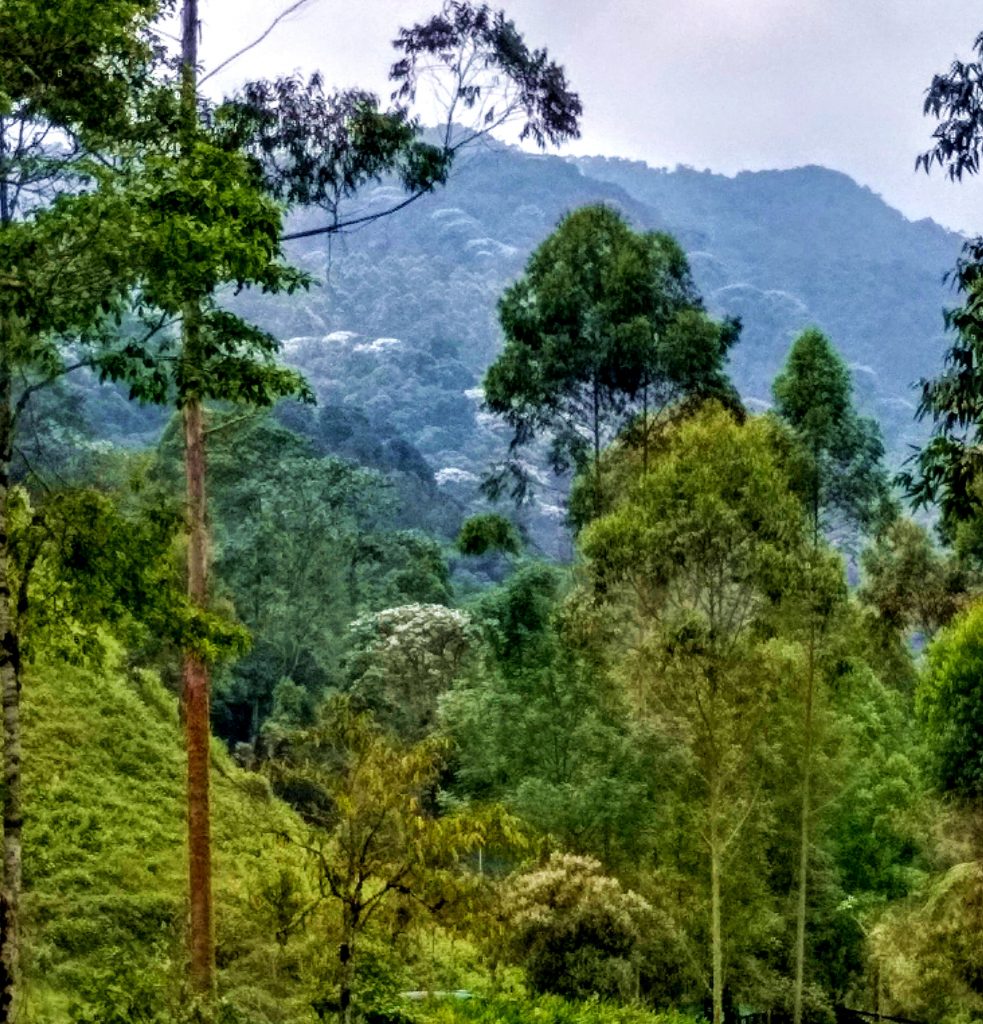
![]()
People’s Lives and the Wealth Differential
Two months as a tourist in a place is long enough to get to know people and make some friends. It’s also long enough to gain insight to the lives people lead, something the casual short-term tourist never bothers about. If I were a casual tourist I’d talk about the cool dreamcatcher I bought in Salento and the two bags of specialty coffee I got at a shop in Filandia and how much fun it was to ride the roller coaster at the Parque del Cafe. But homey didn’t play that. Instead, homey dug down below the surface to find what he could find.
He found a lot of misery, to be perfectly honest. It doesn’t show much on the surface. People in Colombia like people anywhere else are interested in showing a good face to the world. They want to wear the latest fashions even if they can’t afford them so they feel like they’re in the swing of life in the world they inhabit. But it all costs money, in Colombia just as it does anywhere else. I discovered that what keeps this appearance of well-being afloat is massive levels of debt. In that regard it’s similar to the Philippines. I’d gauge the destitution index at about 80% in Colombia as opposed to 98% in the Philippines.
When you put those statistics on the ground and meet real people it’s inevitable that you come across a lot of economic hardship. The only way to change your experience of the statistical spread is to hobnob with the 1% or to avoid contact with locals altogether. For the two month trip I decided to go for broke (no pun intended LOL) and meet people freely so I could understand the human lay of the land. This section gives my thoughts on what I experienced.
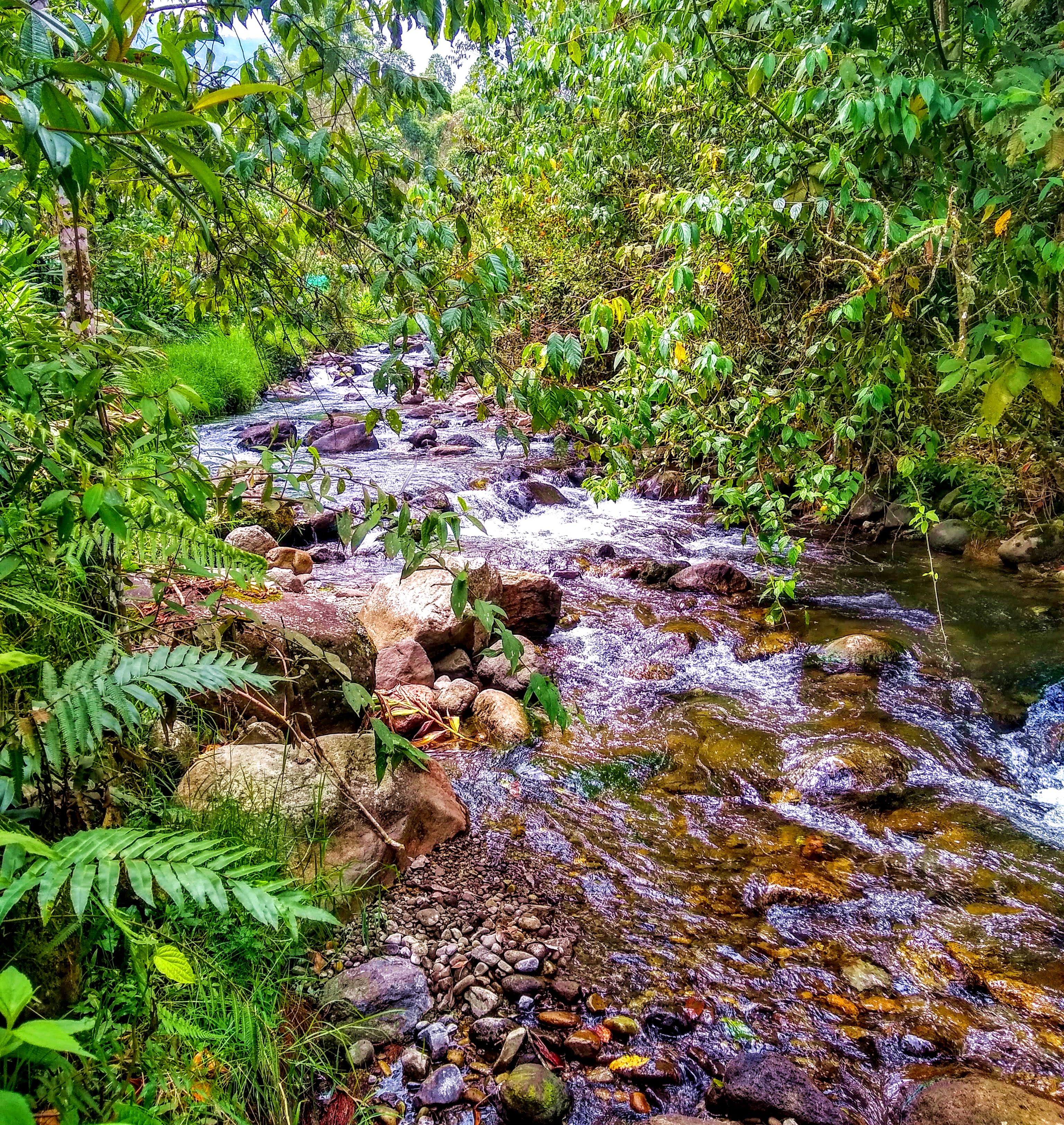
Family. It’s no secret that family structure in Latin cultures is predominant in the social order — but less so than in the Philippines, where there really isn’t any social structure except the family. I’ve met young people in Colombia whose purpose in life is to create a fulfilling life for themselves, not “to help my family,” which is the only thing I ever heard from anybody in the Philippines. All the same, family ties are the bread and butter of life here and the individual is unthinkable outside the family structure. Only a few people break free and become entirely independent, usually at the cost of losing social status.
The same kind of thing goes on here as in other developing countries — people having seven kids when the dad sells lottery tickets on the street and the mom does piecework sewing out of the back bedroom. Nobody has a pot to piss in and when the parents become older the kids are supposed to support them. It strikes me as a lunatic way to organize life, but hey, I’m a foreigner. My opinion is beside the point. People are gonna do what people are gonna do.
Poverty. Being poor has its levels just as being rich does. There’s a threshold point at which one becomes “comfortable” or middle-class. I met only two people from the “comfortable” category in my two-month stay. Everybody else was on the scale sliding downward to down and out. Two of the people I met are Venezuelans who fled their country in the desperate attempt to earn some money for the people left behind. They’re a special case I’ll discuss separately.
The way in which Americans approach poverty is not a good basis for adjusting to life in Colombia or in any other developing country. For Americans the notion of poverty carries tons of negative baggage — e.g. personal failure and things like drug addiction, violence, etc. etc. We think primarily of urban poverty in disadvantaged neighborhoods usually associated with race. That concept of poverty fits only a small percentage of the poverty in Colombia.
Colombian poverty is systemic and existential. It’s been around forever and everybody assumes that it’s just a fact of life. I suppose that attitude is what makes it seem sensible to people to have seven kids when they don’t make enough money to support one. Middle-class Americans these days plan their kids like they plan a very expensive vacation. In Colombia they just pop them out and ask questions later. Same thing in the Philippines and in more countries than I care to count. It’s one of the reasons we have nearly 8 billion people on the Planet, which is a bad idea from the get-go.
In Colombia being poor becomes socially normalized in a way that never happens in American society. After all, if you’re poor in Colombia you have plenty of company — you’re in the effing majority, mate. Being massively in debt or finding yourself behind in the rent doesn’t make you a bad person, it just means you’re average. It’s never God’s fault, of course. God is the one who’s supposed to get you out of the mess you’re in, you don’t ask questions about how you got there in the first place. “It’s complicated” is the most common explanation of the causative factors. Not terribly enlightening if the truth be told, and no roadmap for any way out of the predicament.
Venezuelans who have fled the collapse of their own country and come to Colombia are numerous and their stories are enough to stand your hair on end. They usually come with nothing but the clothes on their backs and try to get work in Colombia in order to send something home to their hungry relatives. The dream of many is to go to Spain, not the USA, because in Spain they can apply for refugee or humanitarian aid status. One man I talked to at length, almost 40 years old, told me that he doesn’t believe he’ll ever go back to Venezuela. Things are in such a desperate condition now that it will take years for things to return to a liveable state. He’s a professional with an engineering degree and over a decade of work experience in industry. In Colombia he has no visible means of support and does whatever he can to earn a few bucks. The Colombian government has shown compassion by letting into the country millions of Venezuelan refugees but their presence exacerbates the pressure of economic conditions on Colombians themselves. Consequently there’s tension between refugees and Colombians since the Venezuelans compete for Colombian jobs and will take lower wages than Colombians because they’re more desperate. I’d compare the situation to having a migraine — life goes on but it’s no fun. For the Venezuelans it’s better than staying in a country that’s rapidly on its way to becoming a failed state with living conditions that make Colombia’s look like the Promised Land.
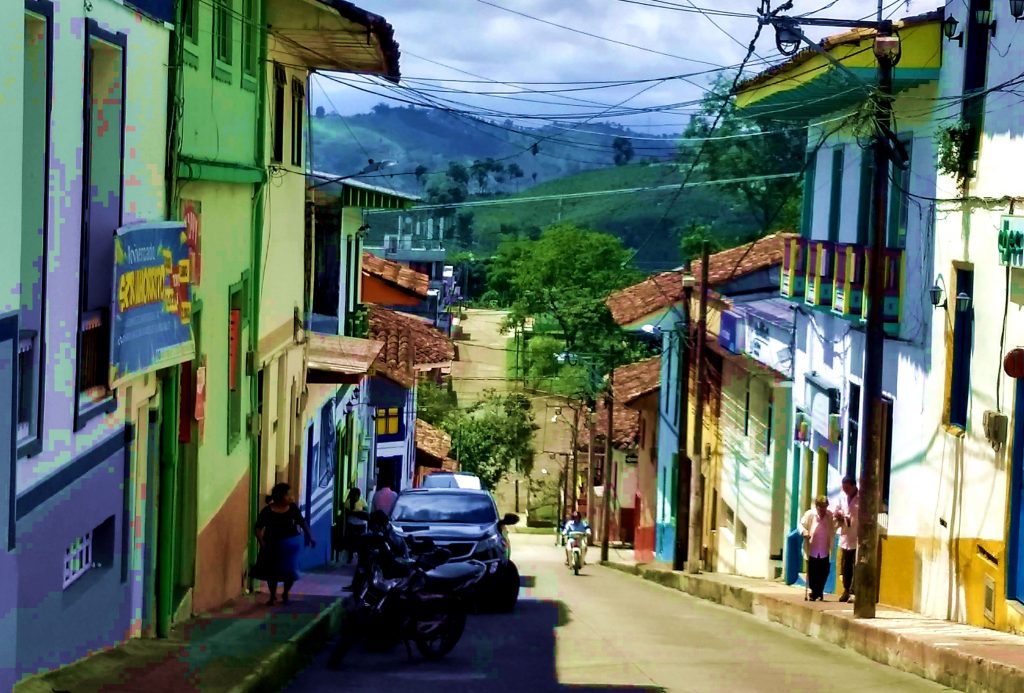
The Wealth Differential, Dealing With
I started in the rural working class and have worked my entire adult life to make sure I go up, not down, the economic ladder. That aspirational agenda gets zinged six ways to Sunday when you come as a foreigner to a place where most everyone sits somewhere on the poverty continuum. If you’re on a two-week tour of five cities with three days at an all-inclusive beach resort then you never really leave the USA economically, you’re just looking at different scenery. If you hang around and get familiar with people, the wealth differential will be up in your face whether you want it or not. Them’s the facts, babes. Deal with it.
It’s important to keep in mind the psychological effect of being immersed in poverty even though one’s circumstances keep it from one’s own doorstep. In American society if there’s a money problem it’s usually approached with the same gung-ho Americans use to do everything else. Being surrounded by irremediable, systemic poverty puts paid to that idea. It’s very wearing on the spirit. It’s like Chinese water torture where the litany of misery comes at you drip by drip and wears you down over time. One person’s shoes are falling apart and he has no money to buy new ones. Another person has stopped university because the money ran out and he’s working a crap job now with no prospect of improving his lot. Someone else has not been able to pay the rent for three months and faces eviction. For the overwhelming majority of people in the country this is Business As Usual. For us in America it means something is seriously out of order and needs to be fixed right now. That reaction is out of place in a country like Colombia because the red alert button will be pressed several times a day if you hang out with locals. It’s not a recipe for a quiet life, trust me.
The effect of this unabating stream of misfortune is to bring me at times to the thought that it would be better by far if the nearly 8 billion pe4ople on the Planet simply dropped dead. Obviously a goodly portion of humanity is and has been for ages a kind of failed state. It would make good sense to cut the Planet’s losses before we take it with us down the toilet we have our heads pointed straight into. Not happy thoughts, but they reflect the grimness of daily reality in a place like the Philippines or Colombia. The news is unremittingly bad so you reach a point where you just want it to stop. But it doesn’t stop. You do what you can as an individual to prevent circumstantial houses from burning to the ground while you watch but another fire pops up as soon as you put one out. That, too, is Business As Usual.
Being the hard-core rationalist I am I’m quick to discern that many of these disaster loops come from cultural patterns susceptible to change — but of course they will not change. Nobody here plans, nobody budgets (not even if you spell it and use it in a sentence), nobody has enough money to save for emergencies. It’s always react in the moment and follow your impulses. We know where that leads, don’t we: trouble with a capital T. Those cultural factors are inbred and unchangeable except by dint of will on the part of the individual. Nothing in the societal context induces a person to think or act differently. So I keep my mouth shut knowing that I’m the odd man out and that people have no ears to hear my take on the matter. My basic message would be: organize yourselves for the love of God.
The counterpoint is to remind oneself that it doesn’t apply to Yours Truly. There’s no reason to feel guilty about that, it’s just another fact in the mix — an important fact one does well never to lose from sight. I remind myself often that despite all the misery around me I’m doing well and only by continuing to do well can I hope to offer some counterweight to what comes my way from the people with whom I associate in places like Colombia. So it’s hip hip hooray for the Great White Tourist since if he goes down the toilet, there goes the one hope a few people have of foreign cash coming their way. If you’re a temporary resident facing such things just remember that it’s good to be flush. Very good. Give yourself a pat on the back for it at least once a day and let your mantra be, “My life’s going along peachy keen, thank you very much.” It’s a dirty job but somebody’s gotta do it. 🙂
![]()
Thus we come to the end of the debriefing on my stay in Colombia. If the pics in this post do anything it should be to remind us that Nature has things far better figured out than we ever will. Let’s hope we learn one day to take more of our cues from that source of handsome abundance.
